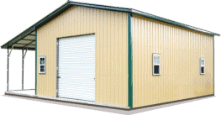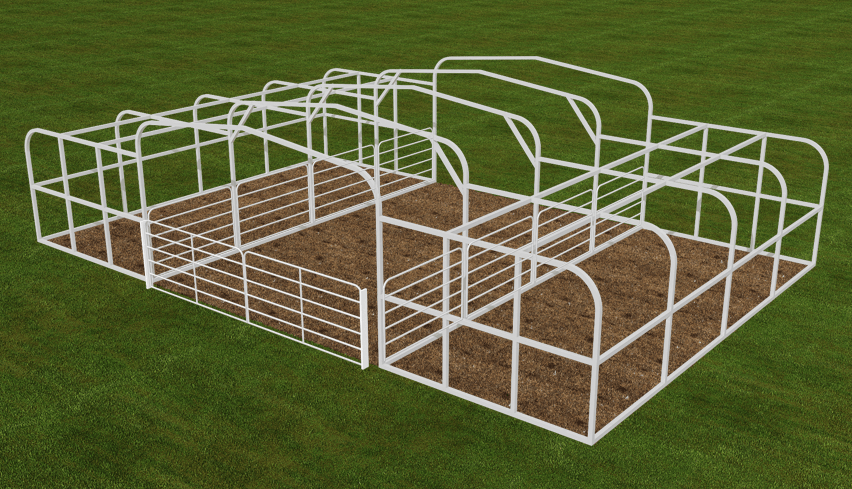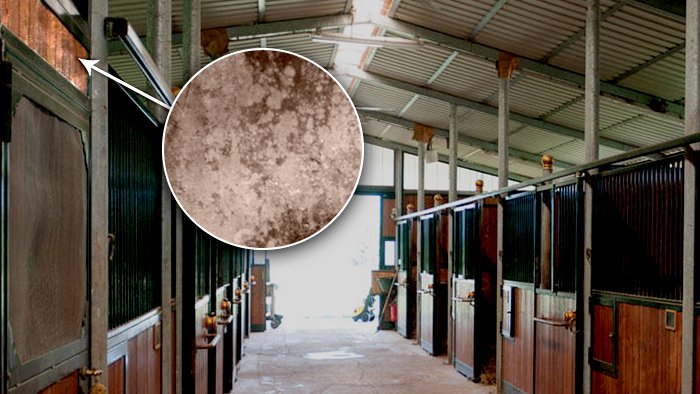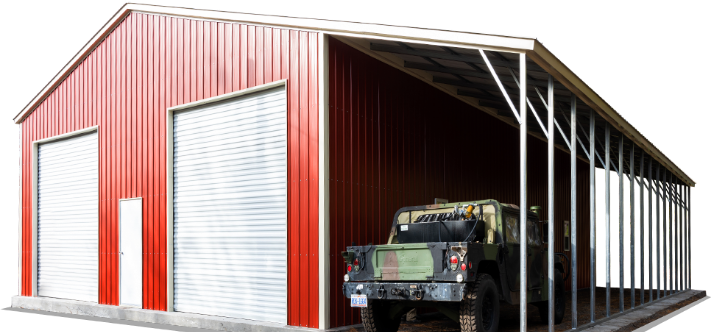Particles of dust dancing in the sunlight coming through your barn windows might make for a pretty picture, but it can be a sure sign of poor air quality in the building. More importantly, if you look closely, you might discover that the dust is coming from molded areas in the barn. If that’s the case, you need to fix the issue as soon as possible.
There are many causes of mold growth and poor air quality in your horse barn building, including inadequate ventilation, raised feeders, closed stall fronts, improper stall cleaning, and more. No matter what the cause is, this is an issue. When your horses are exposed to mold and poor air quality for an extended period, they will face both short- and long-term health effects.
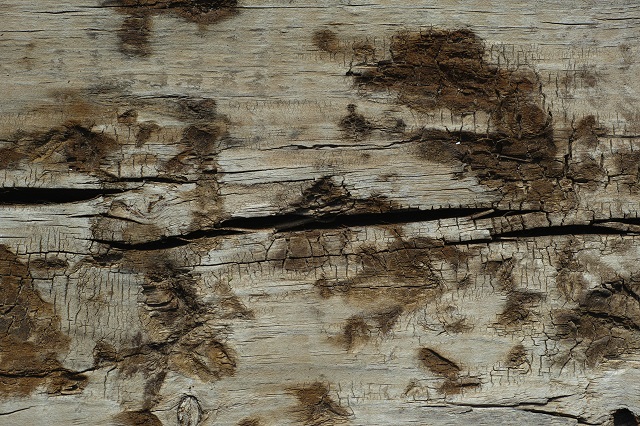
What Is Mold and How Does It Develop?
Areas with large amounts of moisture are prone to mold and mildew. Both are a form of fungus, with mold being microscopic airborne spores that penetrate into the surfaces of your structures. Mildew is a specific type of mold that spreads on top walls and organic materials within your building. Even though there are some differences between the two, both can be dangerous to your health and the health of your horses.
Damp barn walls are particularly vulnerable to mold. The damp wood creates the ideal place for mold to grow and spread. In a place like that, mold can overrun your structure before you know it. So, even if you see a small area of mold, it’s important to take care of it as soon as possible.
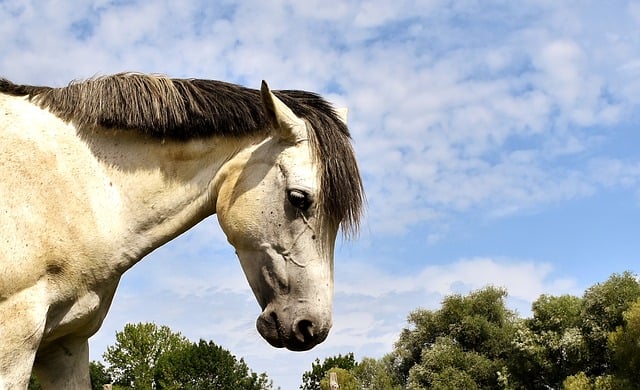
How Does Mold Impact a Horse’s Health?
Back in the 1930s, horses in Eastern Europe and Russia were dying suddenly. At first, the reason was unknown. However, after a bit of investigating, people realized the horses were dying because of issues related to black mold. Exposure to the black mold caused the horses to develop issues with their immune systems that led to bleeding and infection. These issues further developed into nervous system disorders, which eventually caused the horses to die.
Gastrointestinal issues are some of the most common signs that a horse is suffering from mold-related issues. They are typically caused by the horse ingesting moldy hay. While you may not see any mold on the hay, that doesn’t mean it isn’t there. It’s often difficult to determine how much mold is on hay without laboratory testing. So, if your horse is experiencing any of these symptoms, even if the hay looks fine, it may be saturated with harmful mold.
It’s important to note that not all horses react the same to exposure. Some horses that encounter mold on a regular basis suffer from only minimal symptoms, such as a mild allergic reaction. For others, however, it can lead to organ failure. If you have the smallest suspicion that there is mold growing in the horse barn, take action to get rid of it. You need to have the mold removed immediately, especially if it’s in the areas where the horses feed. Remember, mold is not something that will go away on its own. Once it’s there, it won’t leave until you get rid of it.
Tips for Getting Rid of Mold in Horse Barns
Once you notice mold or mildew in your horse barns, you might think it’s going to be a complete hassle and headache to get rid of it. In all actuality, you can prevent future mold and eliminate any that you currently have by following some simple tips.
First and foremost, you need to keep a close eye on the condition of the barn, including the feeding areas and the feed itself. If you notice mold, remove the horses until the mold is removed.
Mold can affect horse tack as well as feed. As far as the tack is concerned, you’ll want to store it in an area where there is no moisture. If it gets damp, especially the leather pieces, there’s a good chance mold will start forming on it. If you were to be out riding and get caught in the rain, you’ll want to wipe down the tack when you get back to the barn and make sure you don’t put it away wet or damp.
It’s also important to remember that mold likes growing in stagnant environments. So, the simplest way to prevent mold is to make sure that the air is circulating inside your barn. You can achieve this by opening windows, or even putting a fan or two in the barn to manually circulate the air. In addition to fans, you’ll also want to add fluorescent lighting to the barn. Lighting, combined with air circulation, helps prevent mold and mildew growth.
Lastly, no matter how hard you try, there is still going to be some moisture in the air that gets into the barn. For this reason, you need to clean the stalls as often as possible. Preferably, you should clean them once or twice a day. The cleaner they are, the less likely mold is to grow. When cleaning the stalls, avoid using toxic cleaning products and stick to a traditional Clorox cleaning solution.
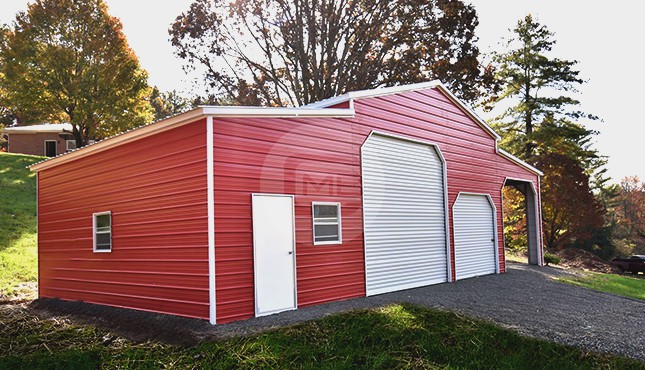
Simplest Solution of All: Buy a Metal Horse Barn
The best tip we could ever give you is to get rid of your wooden barn and replace it with a brand-new steel horse barn. Metal horse barns solve all the problems posed by wood, and you’ll never have to worry about mold and mildew again.
Aside from these structures being mold-resistant, here are some other benefits of going with a metal horse barn:
- Durability
- Safety
- Customizability
- Low Maintenance
- Pest Resistance
- And No More Mold & Mildew!
Metal horse barns are made from one of the most durable materials on the planet: steel. They can be certified to withstand heavy snow loads and high wind speeds. No matter what Mother Nature throws at them, they’ll stand strong. This is especially important since your horses will take shelter here when bad weather comes their way.
Steel horse barns do more than just protect your horses from the weather. Steel is fire-resistant, so that means that your horses will be much safer than they would be in a traditional wooden barn.
One of the biggest benefits of metal horse barns and metal buildings in general is that they are completely customizable. You get to decide everything from the roof and foundation, to the color and the windows. Plus, you can do it all from the comfort of your home using our 3D Building Estimator!
As long as you keep your barn clean, there’s relatively no maintenance with a metal horse barn! There’s no chipping paint or rotting wood to deal with. Your barn will look beautiful and stay sturdy for years to come.
Unlike wood, metal isn’t inviting for creepy critters. The strong structure will keep pests out because there’s no wood to gnaw through. Keeping pests out of your barn is important since they can carry disease or make the building unsanitary for your horses.
Steel doesn’t absorb water, and it doesn’t break down. That means there’s no way for mold and mildew to take root. Plus, steel’s lack of absorbance will help you know if you have excess moisture in the structure. The water won’t soak into the walls, it will puddle and condensate. It’s clear that the best way to protect your horses is to get a steel barn.
Your Horses Deserve the Best – Metal Barn Central
If you want to protect your horses from mold and mildew, a metal horse barn is a way to go. If you want to get the best product at the best price, with the best service possible, look no further than Metal Barn Central. We are the top provider of steel horse barns for a reason. We use only the highest-quality materials, and all of our prefab horse barns are manufactured here in the United States. If you couple that with our outstanding customer service, there’s a no better place to go. Our friendly building experts are ready to assist you in any way they can. What are you waiting for? Call today at (980) 321-9898 and get your horses the metal barn of their dreams!
